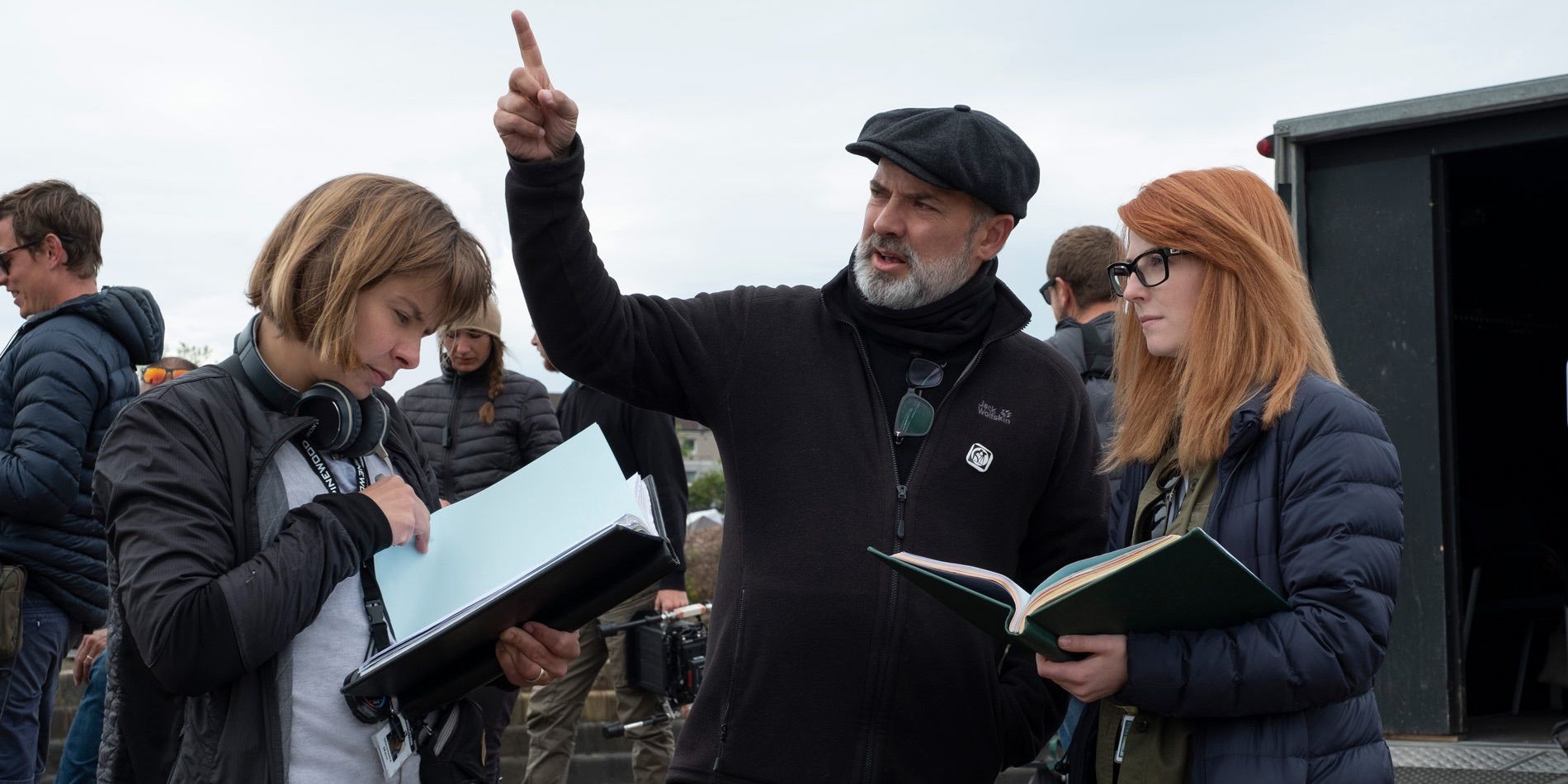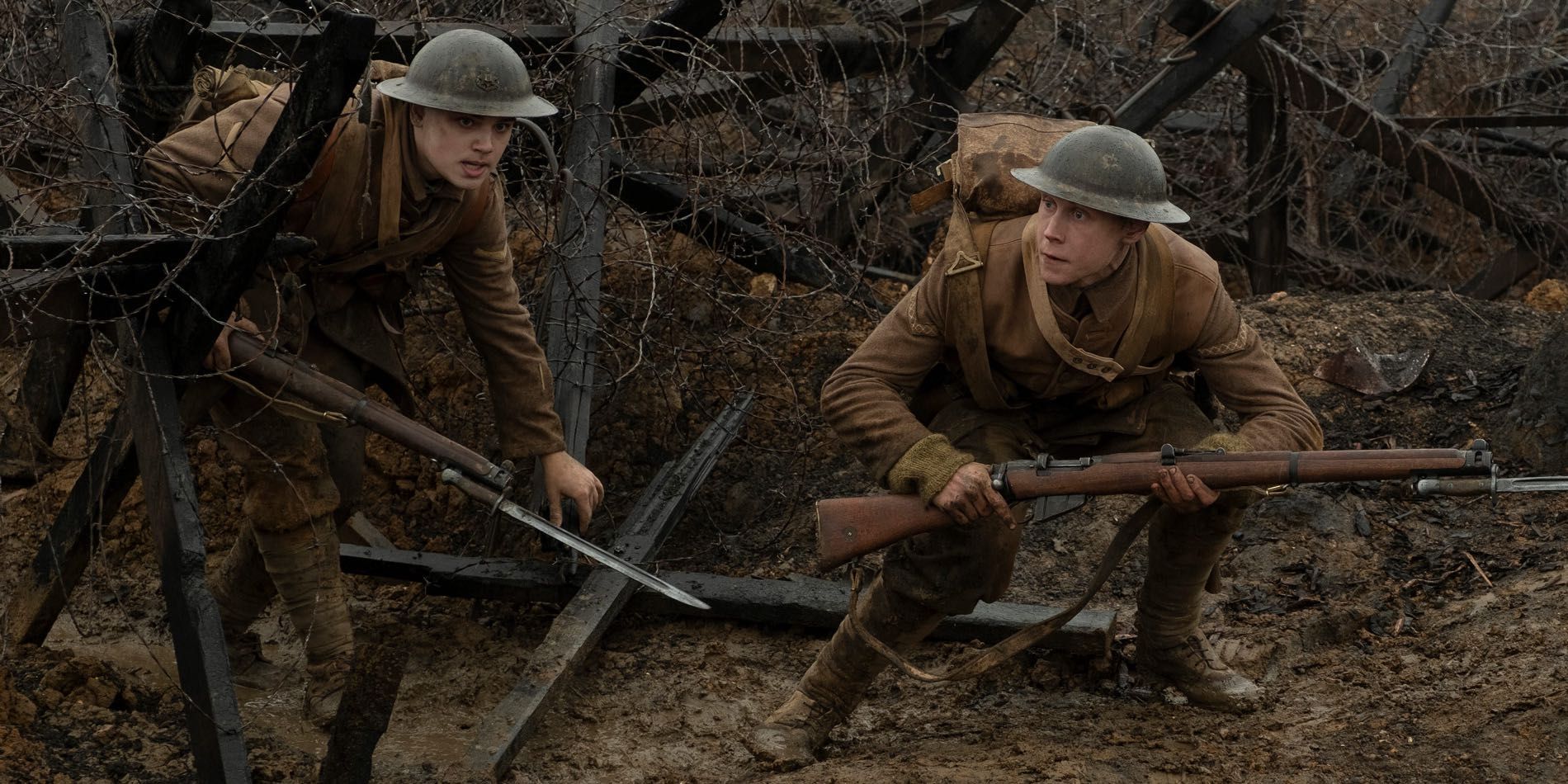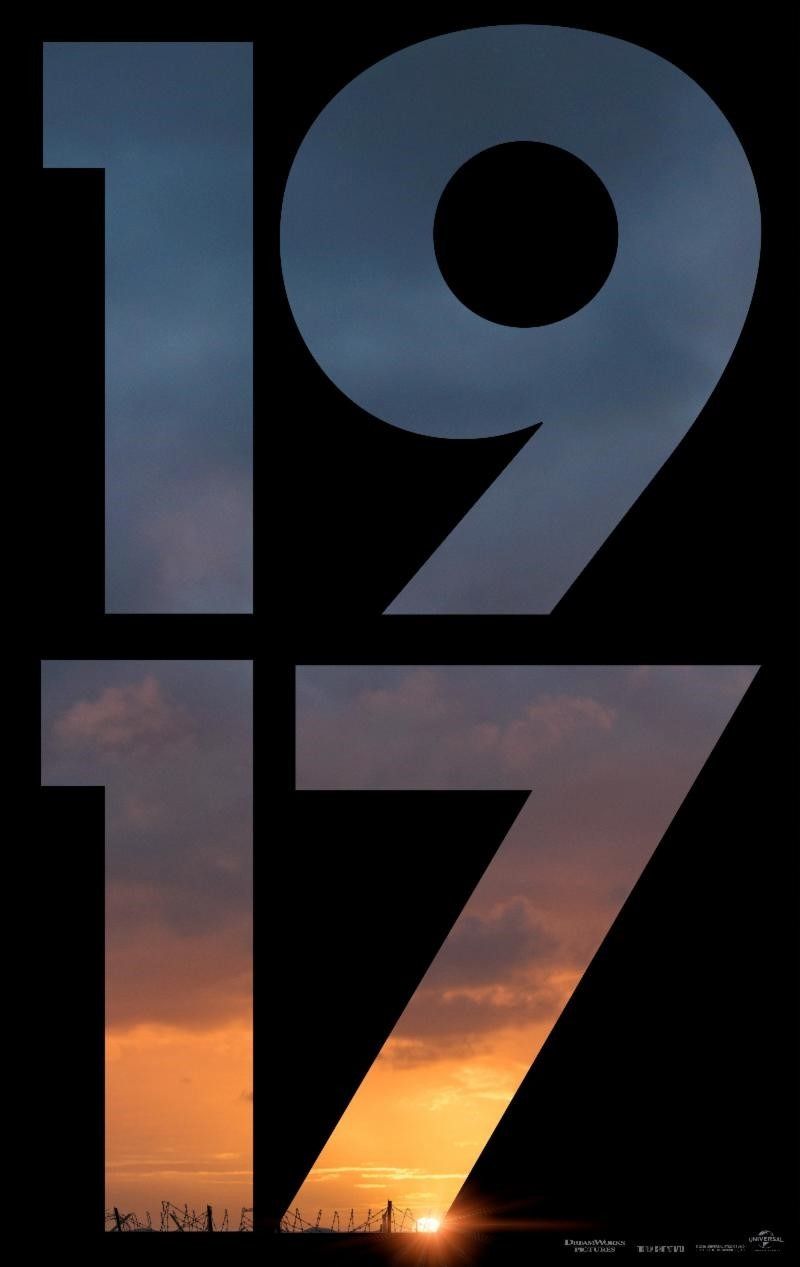From director Sam Mendes and screenwriter Krysty Wilson-Cairns, 1917 tells the story of two soldiers who must take a message to their fellow troops in order avoid an ambush and further loss of life. The film stars George MacKay and Dean-Charles Chapman, who are joined by Colin Firth, Andrew Scott, Richard Madden and Benedict Cumberbatch. What's notable about 1917 is that it reteams Mendes with cinematographer Roger Deakins and the film is presented as if it's all one continuous shot, which provided a number of challenges for the filmmakers. At this year's New York Comic Con, Screen Rant had a chance to discuss the film with screenwriter Wilson-Cairns about its one-take aspect and how she tackled it from a writing perspective.
Walk me through the writing process on a one-take movie like 1917.
Krysty Wilson-Cairns: Just under two years ago, I’m sitting in my pajamas, making stuff up, which is my job. My phone rings and Sam Mendes’ name scrolls across and I [gasp] because I love Sam, we worked together a bunch of times. So I picked up the phone and I was like, 'Hello,' and he was like, 'I have this idea, I can’t tell you what it is, I just need to know if you’re free.' And I was like, 'I’ll be free. I will literally like shoot someone if they try to get in my way for this.' And he was like, 'OK it’s a World War I movie.' I actually remember literally gripping a dresser cause I was such - and he didn’t know this - such a massive history nerd. … I was like, 'My god, yeah.' And I didn’t even get into the fact that I was a massive nerd. I was like, don’t f-ck this up Krysty, and then he was like, 'OK great, why don’t you come to my house on Tuesday and we’ll just talk about the structure and where we’re going to start.' And I’m like, 'Great,' and he’s like, 'Oh by the way, it’s one shot.' And then I was like, did I hear that right? Then I hung up - well, he hung up on me cause he’s Sam Mendes - and then I was like processing it a little bit and I was like, 'F-ck yeah.'
So then I went to my storage unit, I dug out all my WWI books. I grabbed all that stuff and I turned up at his house, we sat at his kitchen table. He was like, 'By the way, we did a lot of revisions on Skyfall here.' And I was like, 'No pressure, just like how many billions did that movie make? Cool, cool.' And he was like, 'I have this idea: It’s about a messenger going across No Man’s Land, could be two of them, they’ve got to deliver a message to save these men, don’t know what the message is.' And I was like OK. And so we sat with a blank piece of paper and we were like, what are all your dream things to see in a WWI movie, and we just made a list of these things and then we went through and we talked about the characters. We got a map out and we did a journey from here to there across No Man’s Land, what would be the foot of the Hindenburg Line. I think it was maybe like four or five hours and by the end of that day we had the structure of the movie and it’s the same structure. It’s not changed, which is batsh-t.
So that was how I got started, and then I went to France and did my own research. … It’s such an amazing place, it gives you such a sense of how much life was lost for 50 yards, because that’s what it was in some cases, it was like inches. Thousands of lives were lost for inches. That then really impressed upon me the importance of telling the story right. So I wrote the first draft, like the very rough first version of it, when I was out there. I’m a terrible speller so I asked my mum to read it to spellcheck it. She was in Paris, so I met her in Paris, and she read it and she came to me crying like, 'You ruined my holiday.' I was like, 'Yes! It’s working.'
So emotionally the arc worked for me, and works for Sam. After that, it went back and forth, back and forth, back and forth. I think by the second or the third draft we had the movie that we wanted to take out and sell and attach people to - Roger - and Sam had been in conversations with all these people before the script was finished, before it was ready really to show to other people. Like it was all go, the train was on the track. In fact, this time last year, we were doing revisions in New York.
I was involved in all the rehearsals. Many of the creative consultations and how we were going to realize the shots, because often - it was very circular - often we’d have a scene and then this would be how we would treat the scene and this would be the emotion of the scene. [Then] we would change it so that this shot would be more interesting, so we’re always preserving the emotional integrity of it, but find out what is the best way to convey this to an audience, like what will make people go, 'Holy sh-t.' To really feel intimate and totally immersed. So it was a long process. It was probably like a year and a bit of my life, and not all in my pajamas, which was heinous to me at the beginning. When I was on set, I was like, 'This is cold and outside.' And by the end of it, I was like, 'I love everyone, you’re my family.' It was wonderful.
I’m curious about why you decided to make it two main characters instead of one?
Wilson-Cairns: From a purely, not technical but emotional point of view, when you’re in real-time, there’s no ability to flash back or flash-forward, there’s no ability to cut, there’s no ability to be anywhere but with those two characters. So if it was only one, it would be near impossible to know anything about him, he would have no one to speak to. There’d be no way to glean information from him, other than his actions and that, I think, would make this film a bit of a chore. Whereas these two boys, George and Dean and what they did with the characters, are so unbelievably brilliant. I’m obviously very biased, but they’re wonderful actors and they brought to [life] a version of these characters that you just want them to live so badly. You’re just like, 'Make it, make it, make it.' And that’s what this film needs to be. It’s a mission movie, but it needs to be thrilling and you want to be on the edge of your seat all the time, really rooting for these guys. And with one person, I don’t think that would’ve been possible. Or, put it this way, I don’t think it would’ve been as easy to connect to someone like that.
In writing, there’s a phrase, “kill your darlings…”
Wilson-Cairns: I killed a bunch of darlings.
Tell me about them.
Wilson-Cairns: Can’t tell you about my darlings, my darlings are secrets. Dead secrets. Dead secrets I keep in a chest of drawers and I cry over them at night. I’m like, 'Darlings, I wish I could’ve saved you.' No, so much of what you have to do is do what’s right for the story, what’s right for the project, and sometimes you have to put aside your own ego, your own self-indulgence, which is what darlings often stem from. The thing is, though, even though I killed a lot of my darlings, the entire film is my darling. I love it so much, I can’t even begin... Like I’m considering having 1917 tattooed on my ass.
So what did you learn about World War I in doing this? You said you were a history buff but did you learn anything new?
Wilson-Cairns: Big nerd. BIG nerd. It’s nice of you to say buff because that sounds a bit more like a cool thing, but no I’m a massive history nerd. Love WWI, love WW2, I mean, just into it. I knew a lot about the war. I knew a lot of the macro stuff about the war, I knew all about the big moves, I knew all the players, I knew all the generals, all of that. What I learned from doing this is reading the first-hand accounts, reading the soldiers that lived and died out there, the boots on the ground, if you will. And I learnt from that is, for all the disastrous charges, for all the king and country, what those men really fought for were each other and were the brotherly love friendship, duty and honor. That idea of being selfless is sort of lost now. I mean, if you said to me, you’re going to spend four years in a trench, shooting someone across from you, I’d be like, 'Go f-ck yourself.' But that idea of community and spirit and coming together against unbelievable hardship and horror was something that was just astounding to me, the human spirit was really astounding to me in those pages I read. How people could survive it was amazing. So a lot of that research went into the film and trying to capture what it was like to survive, to live through this war. And I think between that intimacy of research and the intimacy of the script and the way it’s shot, you feel like you’re living 150 minutes in someone else’s life and, to me, cinema should be pure escapism and that’s what this film is.
Can you talk a little bit about the main characters’ dynamic?
Wilson-Cairns: So George MacKay plays Scofield, he’s a lance corporal, he is a bit more seasoned, he’s been out there perhaps a bit longer. Then there’s lance corporal Blake, who’s Dean-Charles Chapman. He’s younger, a bit greener. The two of them are, in a way, kind of the perfect foil for each other. If I say anymore, I might get into trouble.
What would you want audiences to take away, or learn from this movie?
Wilson-Cairns: I think, obviously, I would like people to think more about WWI and to think of the sacrifice that many people made so that we could live in our free and lovely world. ... What I really hope people take from this movie is that they’re entertained, because ultimately it’s a thriller, it’s immersive, it’s a ride, it’s cinematic. I hope that people walk out of it and they’re just like, 'Wow I can’t believe that got made. I can’t believe we make films like that.' That’s what I want.



